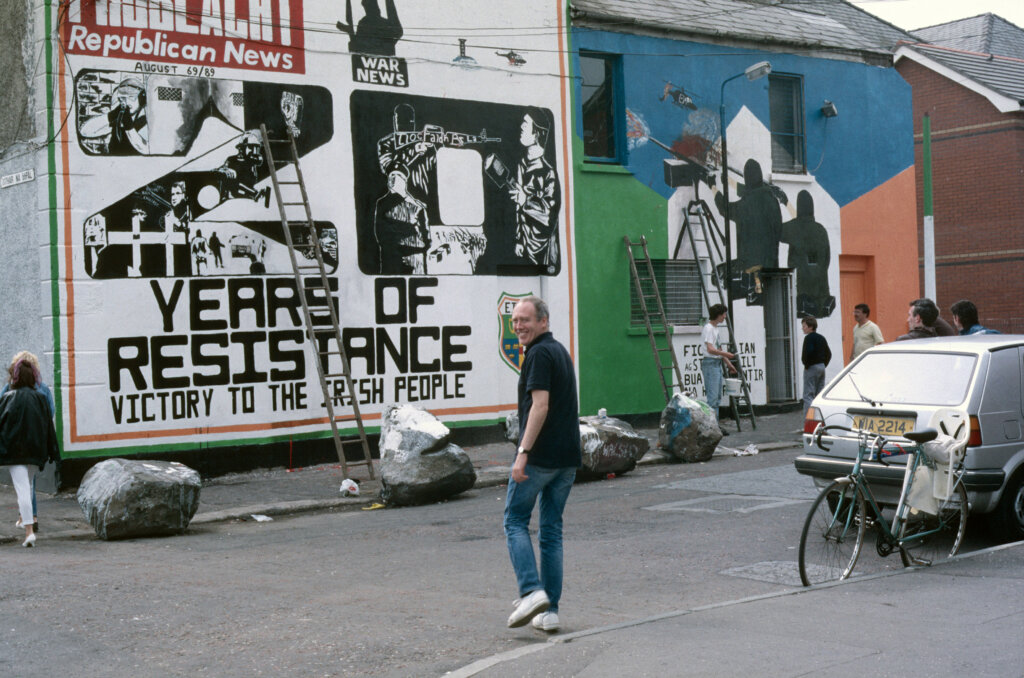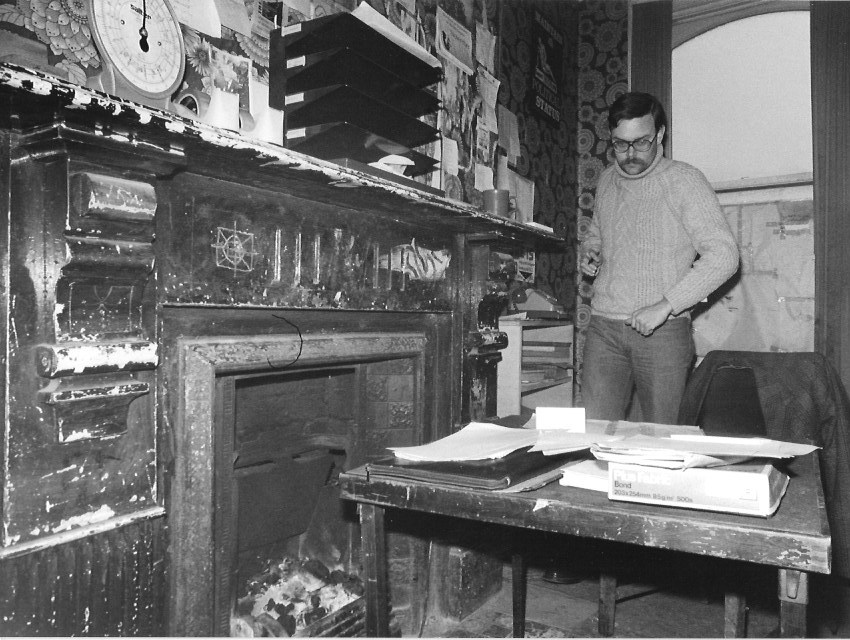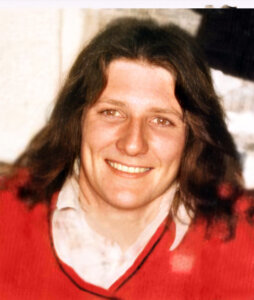The image at this site in Sevastopol Street is the most photographed mural in Belfast and is visited by hundreds of tourists every week, regardless of the season. It is maintained by the Bobby Sands Trust. Many artists have contributed to its design, including Danny Devenny, Marty Lyons, Michael Doherty and Gerard ‘Mo Chara’ Kelly.
As well as Bobby’s image (more on this, later) it features two quotes from Bobby (including from his prison diary) and on either side of him are images of his Belfast IRA comrades on the blanket protest, Kieran Doherty (left) who was elected to the Irish parliament while also on hunger strike in 1981, and Joe McDonnell (right) who was arrested with Bobby in October 1976. Bobby, Joe and Kieran died in 1981. Below Joe is an image of Belfast republican Sean McCaughey who died on hunger and thirst strike in Portlaoise Prison in 1946, protesting against the extremely harsh prison conditions imposed by an Irish government on republicans. To the right of this image are lines from ‘The H-Block Song’ by the late Francie Brolly:
I’ll wear no convict’s uniform
Nor meekly serve my time
That Britain might brand Ireland’s fight
Eight hundred years of crime
At the bottom of the mural is a lark breaking free from its cage/chains. The provenance of this highly-symbolic image comes from one of Bobby’s short stories, ‘The Lark and the Freedom Fighter’. (The nearby bookshop, An Fhuiseog, takes its name from the Irish word for lark.) In his story Bobby says that the imprisonment of the lark (a renowned songbird) is a crime of great cruelty because the lark is one of the greatest symbols of freedom and happiness. Its jailor demands that the lark should do as he demands and in punishing it covers its cage with a black cloth, deprives it of sunshine, of light, of food, but the lark longs to be free and to sing its own songs and dies rather than conform to the will of its jailor.
At the very top is the mythical phoenix, a bird symbolising rebirth and renewal which at the end of its life cycle is said to burst into flames but to arise anew from its ashes. It was a symbol adopted by the Republican Movement after the 1969 pogroms against nationalists in these nearby streets out of which arose a much stronger, defiant and resilient Movement, and a reorganised IRA.
Over the past forty years several murals have adorned this wall at the junction of the Falls Road and Sevastopol Street which is the headquarters of Belfast Sinn Féin. Many were defaced by British Army patrols whose members were spotted throwing paint bombs at the wall late at night or in the early hours of the morning. The office was also subjected to gun and bomb attacks, including the killing by an RUC officer in 1992 of three people in the advice centre at the Falls Road corner. He shot five people in all, killing Pat McBride and Paddy Loughran, who worked there, and Michael O’Dwyer who had been a constituent making a housing inquiry. He seriously injured two others: Pat Wilson and Kate Larkin.

This mural was painted in August 1989 to commemorate the resistance to the reintroduction of the British Army on our streets in August 1969
51/53 Falls Road
In 1980 the Belfast Republican Press Centre at 170 Falls Road, which also housed Republican News and from 1979 An Phoblacht/Republican News, vacated the dilapidated building due to housing redevelopment in the area. The press centre, the newspaper, prison transport and the Green Cross shop all moved into 51/53 Falls Road, as did Sinn Féin. It was the former surgery of Doctors Harrington and Ryan (who had been involved in the Belfast IRA circa 1920). This photo (below) of Tom Hartley, office manager at 170, gives you an idea of the state of the building before the move.

The Republican Press Centre at 170 Falls Road was attacked on multiple occasions which included a car bomb attack, a hand grenade attack and the shooting of one of the newspaper’s van drivers at the front door, Billy Kennedy. It was also subjected to dozens of raids by the British Army and RUC, including the arrests of staff which culminated in prosecutions of the staff of ‘Republican News’ and many of the officer board of Belfast Sinn Féin, and the seizure of the newspaper’s archives which were only partially returned when the court case collapsed. Pictured: Tom Hartley, manager of the press centre, who later became Sinn Féin Mayor of Belfast and a renowned author of the histories of Belfast’s main cemeteries
However, the ‘new’ building at 51/53 was, in fact, as old as 170, and was knocked down and rebuilt around 2000.
Iconic Image
Bobby, who died at the age of twenty-seven, had spent one third of his life in jail. In fact, he had only been free for six months, having been released from the Cages of Long Kesh in April 1976, then rearrested that October. In the Cages he had had political status and a few photographs taken surreptitiously back then did exist. It is from one of these that the current image on the wall was taken. The face of a smiling young man, with long hippy-like hair, powerfully rebutted the ‘criminal’ stereotype promulgated by the NIO. The NIO tried to get the world press to accept another photograph—an RUC ‘mugshot’ from the time of his arrest—but it was too late and this smiling image became iconic and definitive.
-oo0oo-
 All photos taken by Bill Rolston, a number of which appear in the five volumes of his books on political murals, Drawing Support (published by Beyond the Pale Books).
All photos taken by Bill Rolston, a number of which appear in the five volumes of his books on political murals, Drawing Support (published by Beyond the Pale Books).











